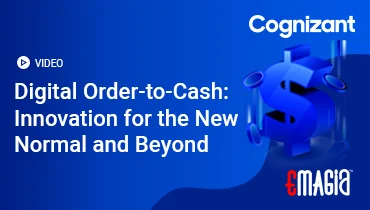In the world of B2B commerce, accepting credit card payments is no longer a luxury; it’s an expectation. Customers demand the convenience and flexibility to pay their large invoices with a corporate card, a virtual card, or a similar payment instrument. But for the business accepting the payment, this convenience comes at a significant cost. The fees charged by card networks and payment processors can silently and steadily erode profit margins, especially on high-value B2B transactions.
For too long, businesses have either absorbed these costs or tried to account for them by raising prices across the board for all customers. Neither of these approaches is ideal. Absorbing fees cuts directly into the bottom line, while universal price increases penalize customers who choose to pay with less expensive methods like ACH or wire transfers. There is, however, a more strategic and transparent solution: **Surcharge Management in B2B Payments**. This is the practice of passing the cost of credit card processing directly to the customer who incurs it, allowing businesses to protect their profitability while maintaining competitive pricing.
Navigating the Surcharge Landscape: Compliance and Rules
While surcharging is a powerful tool, it is not a free-for-all. It operates within a complex web of legal and regulatory requirements that must be carefully navigated to avoid fines and penalties.
Federal and State Law Requirements
In the United States, surcharging is federally legal, but some states and territories still have specific regulations. Businesses must be diligent in verifying the legality of surcharging in their jurisdiction. The most critical rule is that a surcharge cannot be a profit-generating tool; it can only be used to recover the actual cost of processing the payment.
Card Network Rules and Mandates
Beyond legal compliance, every business must adhere to the strict rules of the card networks (Visa, Mastercard, American Express, etc.). These rules govern a wide range of practices, including:
- Disclosure: You must provide clear and conspicuous notice of the surcharge to the customer before they complete the transaction.
- Card Eligibility: You can only apply a surcharge to credit card payments. Surcharging a debit or prepaid card is explicitly prohibited.
- Amount Cap: The surcharge amount is typically capped, often at 3% or 4%, but it can never exceed the merchant’s actual cost of acceptance.
- Line-Item Requirement: The surcharge must be displayed as a separate line item on the customer’s invoice and receipt for full transparency.
- Uniformity: Generally, if you surcharge one credit card brand, you must surcharge all of them equally, though some nuanced exceptions may apply.
Essential Features of a Surcharge Management Platform
Manually managing surcharges across a multitude of invoices, while ensuring compliance with a vast number of rules, is an administrative nightmare. This is where a dedicated software solution becomes invaluable.
Dynamic Rate Calculation and Smart Eligibility
A high-quality surcharge management platform automatically calculates the correct surcharge amount based on the specific card type, the transaction amount, and the rules of the card network. It uses smart logic to automatically identify the payment instrument and apply the surcharge only when it is legally and compliantly permitted. This eliminates the risk of human error and ensures a consistent approach across all transactions.
Seamless Integration with Invoicing Systems
For **Surcharge Management in B2B Payments** to be effective, it must be integrated directly into a company’s invoicing and payment systems. The software should automatically add the surcharge as a separate line item on the invoice and the final receipt, ensuring transparency and compliance without any manual intervention. This is crucial for a smooth and professional customer experience.
Comprehensive Reporting and Analytics
The platform should provide robust reporting and analytics that allow finance teams to track surcharge revenue, monitor compliance, and analyze customer payment behavior. These insights are essential for measuring the success of the surcharge program and making data-driven decisions about pricing and payment strategies.
How Emagia Helps with Strategic Surcharge Management
While many payment processors offer basic surcharging functionality, Emagia’s approach is fundamentally different. It integrates strategic **Surcharge Management in B2B Payments** into its broader, AI-powered Order-to-Cash platform, providing a holistic solution that goes beyond mere transaction processing.
Emagia’s platform includes a dynamic surcharge engine that automatically handles all the complexities of compliance. It uses intelligent algorithms to determine if a transaction is eligible for a surcharge based on a variety of factors, including card type, geography, and specific business rules. By automating the entire process, from calculation to line-item display on the invoice, Emagia enables businesses to protect their profit margins without adding any administrative burden to their finance teams. This frees up resources to focus on strategic initiatives, while the system works seamlessly in the background to ensure that your business stays profitable and compliant.
FAQs – Your Questions About Surcharges Answered
What is a surcharge in B2B payments?
A surcharge is an additional fee added to a B2B transaction when a customer pays with a credit card. Its purpose is to recover the costs that a business incurs for processing the credit card payment.
How is a surcharge different from a convenience fee?
A surcharge is specifically for recovering credit card processing costs and applies only to credit card payments. A convenience fee, on the other hand, is a charge for the convenience of using a non-standard or alternative payment method, such as paying a bill online or over the phone. Convenience fees are not permitted in most B2B contexts.
Can I charge a surcharge on a debit card?
No. Under the rules of the major card networks, surcharges are not permitted on debit card transactions. The best surcharge management software will automatically detect the card type and prevent a surcharge from being applied to a debit card.
How much can I legally surcharge?
The surcharge amount must be a percentage that is equal to or less than the actual cost of processing the credit card payment. While some card networks set a cap (e.g., 3-4%), it is illegal to use a surcharge to generate a profit.
What are the benefits of using a surcharge management system?
Using a dedicated system provides several benefits, including automatic compliance with legal and card network rules, protection of profit margins, encouragement of lower-cost payment methods from customers, and a significant reduction in the manual administrative work required to manage surcharges.



